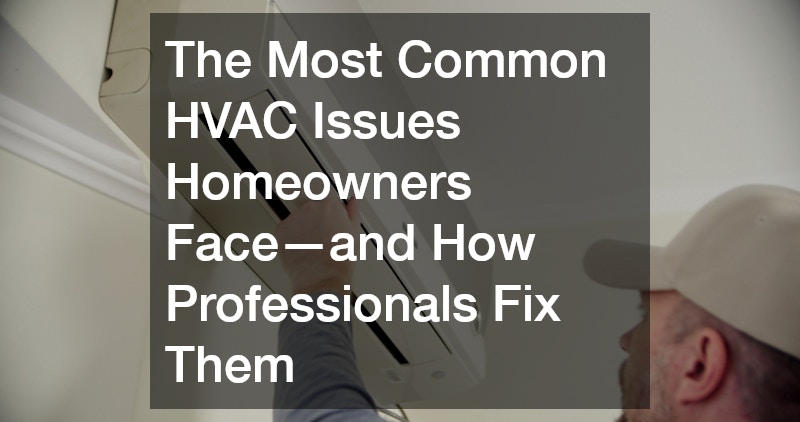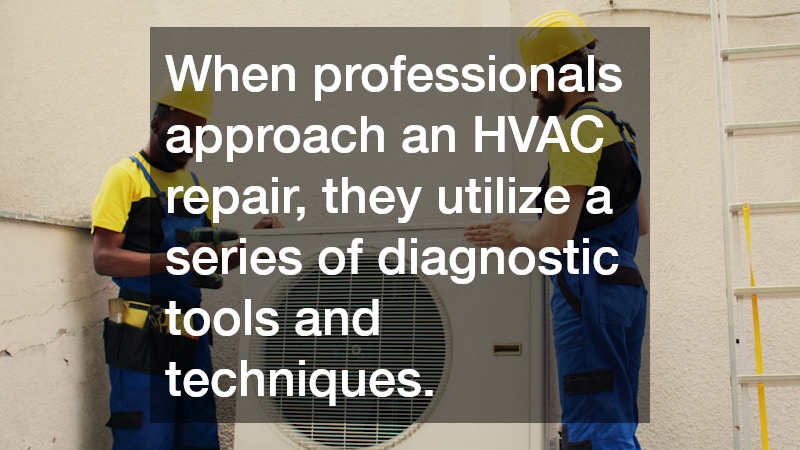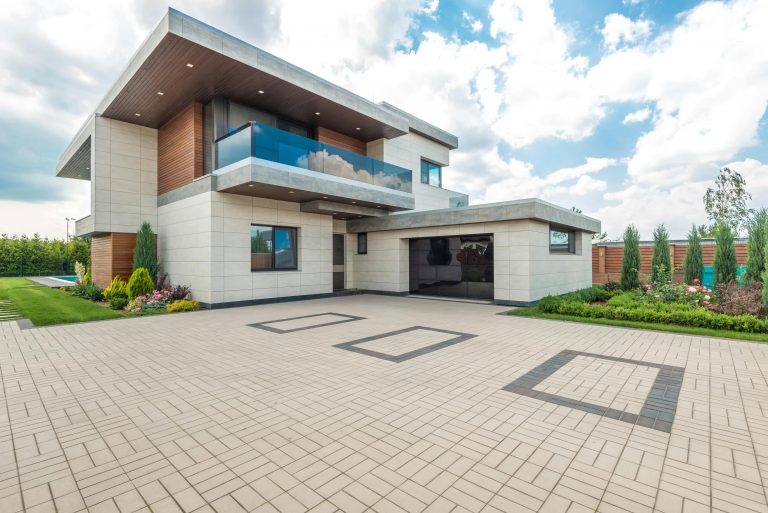

The Most Common HVAC Issues Homeowners Face—and How Professionals Fix Them
Common Causes of HVAC Temperature Issues
When an HVAC system fails to maintain the set temperature, it can be frustrating for homeowners. The most common causes behind temperature inconsistencies usually stem from thermostat malfunctions, dirty filters, or failing components. Thermostats that are outdated or improperly programmed can send incorrect signals, leading heating or cooling systems to work inappropriately. Dirty air filters, meanwhile, restrict airflow, making it hard for the system to heat or cool the space efficiently.
Professional Diagnostic and Repair Techniques
When professionals approach an HVAC repair, they utilize a series of diagnostic tools and techniques to identify the root cause of the issue. The first step often involves checking the system’s thermostat and electrical connections to ensure they are sending and receiving the correct signals.
Using specialized equipment, technicians can gauge the efficiency of heating and cooling cycles, providing insights into potential mechanical failures.
Understanding Short Cycling Causes
Short cycling is a common HVAC problem that occurs when the system turns on and off too frequently. This issue often arises due to an improperly sized HVAC system. When a system is too large for a home, it rapidly reaches the desired temperature and shuts off prematurely, leading to inefficient energy use and increased wear on the system’s components.
Identifying Airflow Blockage and Restriction
Airflow is crucial to an HVAC system’s functionality, and blockages can lead to various problems, including reduced efficiency and increased energy consumption. Common culprits of restricted airflow are clogged filters, obstructed ducts, or closed off vents. Regular use without proper maintenance often leads to accumulation of dust and debris in these areas.
Aside from usual suspects like filters and ducts, airflow issues can also originate from mechanical failures like broken fans or motors. Such failures hinder the HVAC system’s ability to distribute air effectively, overburdening the system’s capabilities. Additionally, poor system design or installation may leave some rooms without adequate airflow, exacerbating the restriction problem.
Common Noises and Their Underlying Causes
Unusual noises emanating from an HVAC system are often the first sign of a potential problem. Common noises, such as banging, clanking, or whining, usually indicate loose or broken parts. Components like fans, belts, and motors can become faulty over time, leading to these disruptive sounds as they struggle to function.
Rattling noises might suggest that there are loose parts or debris stuck in the ducts or other parts of the system. This can occur from wear and tear or inadequate installation, leading to misalignment. Hissing noises are another concern, often pointing to duct leaks or refrigerant issues that can result in inefficient operation and higher energy costs.
Factors Leading to Increased Energy Consumption
Inefficiencies within the system frequently drive increased energy consumption in an HVAC system. Dirty filters and ducts reduce the system’s ability to circulate air properly, causing it to work harder to maintain the set temperatures, thus using more energy. Inadequately sealed homes further exacerbate this problem by allowing conditioned air to escape.
The age and efficiency of the HVAC system also play a crucial role in energy consumption. Older systems may not have the energy-efficient technologies present in modern units, such as variable speed compressors or eco-friendly refrigerants, leading to higher operating costs. Regular maintenance of these older systems is crucial to ensure they are working as efficiently as possible.
Potential Causes of Uneven Temperatures
Uneven temperatures in a home are often caused by incorrect system sizing. An oversized HVAC system could lead to poor air distribution, where the system fails to circulate air evenly throughout different zones or rooms. This results in some areas being too warm while others remain cold.
Poor system design or installation can leave some parts of the home without adequate ductwork or vents, preventing consistent airflow distribution. Additionally, blocked ducts, incorrect thermostat placement, or malfunctioning zone control systems contribute further to temperature disparities within a house.
What leads to water leaks around my HVAC system?
Water leaks around an HVAC system are typically indicative of condensate problems. In cooling systems, condensation forms on evaporator coils when warm air passes over them. Normally, this moisture is directed away via a drainage line. However, clogs in this drainage system can lead to overflow and subsequent water leaks.
Frozen evaporator coils due to refrigerant leaks or airflow issues can also cause leaks. When these coils thaw, the excess moisture can overflow the drainage pan, especially if the system is already clogged. Poor installation or maintenance can also exacerbate these problems, leading to further complications such as water damage or mold growth.
Common Sources of HVAC System Leaks
HVAC system leaks are problematic, leading to inefficiencies and potential damage. Commonly, leaks occur in ductwork due to age or poor installation, allowing conditioned air to escape and decreasing system output. Refrigerant leaks pose a larger concern, impacting cooling efficiency and potentially damaging the compressor due to low internal pressures.
Poor seals around the HVAC unit and ill-fitted components also contribute to air leaks. Older ducts lacking proper insulation are similarly prone to significant heat loss, necessitating more work from the system to maintain indoor climate control.
Identifying the Causes of Bad Smells
Whenever an unpleasant odor is emitted from an HVAC system, it is often a sign of problems requiring immediate attention. Musty smells usually indicate mold or mildew growth in the ducts or filters, often resulting from excess moisture or poor ventilation. Such growth can pose health risks and impact air quality.
Burning smells can signal electrical issues or overheating components within the system, necessitating immediate professional intervention to prevent further damage or risk of fire. Unpleasant microbial or chemical odors might hint at a refrigerant leak, which affects system efficiency and poses safety concerns.
Conclusion
Understanding common HVAC issues and having them addressed by professionals ensures optimal performance and longevity of the system. Regular maintenance, proper equipment sizing, and timely repairs can avoid many of the common pitfalls leading to discomfort and inefficiency in home climate control. Homeowners who stay proactive in these areas will not only enjoy consistent indoor climates but also benefit from improved energy efficiency and reduced operational costs, promoting a sustainable living environment.





